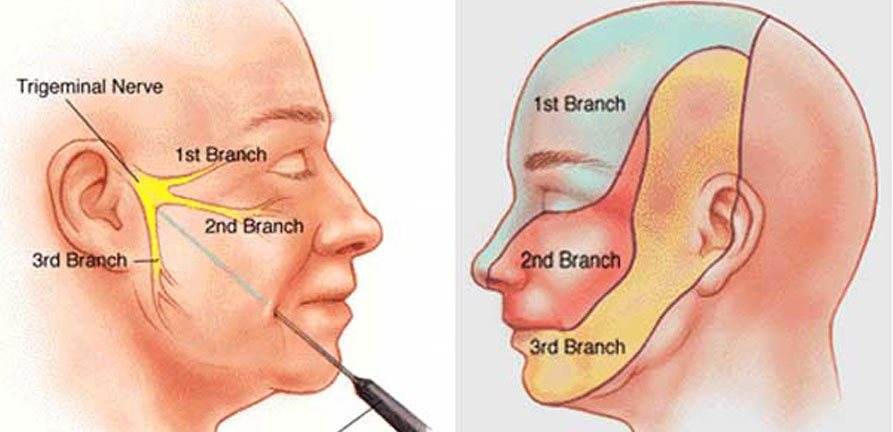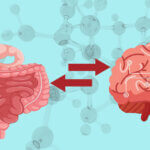Overview of Trigeminal Neuralgia
Trigeminal neuralgia is a neuropathic disorder that affects one or both of the trigeminal nerve supplying the face. The condition occurs as a result of damage or irritation to the trigeminal nerve, which is responsible for providing sensation to the head and face. The main symptom is abrupt, electric shock-like or stabbing pain in the face, primarily on one side, often triggered by simple activities such as talking, eating, or even encountering a light breeze on the face. It can cause intense pain in the ear, eye, lips, nose, scalp, forehead, teeth or jaws. This disorder is generally known to develop after the age of 50 and females are most commonly affected by it.
The trigeminal nerve arises from one motor nucleus and three sensory nuclei that extend throughout the length of the brainstem. Trigeminal neuralgia is usually classified into two forms: paroxysmal TN, characterized by sporadic, intense episodes, and TN with continuous pain, which involves persistent but less severe pain. The condition can be caused by pressure on the trigeminal nerve due to a blood vessel (primary TN), or as a result of other conditions such as multiple sclerosis or a tumor (secondary TN).
Diagnosis Trigeminal Neuralgia:
Although the diagnosis of trigeminal neuralgia is solely clinical, there are plenty of ways to evaluate and diagnose this condition. When diagnosing trigeminal neuralgia, the doctor will start by talking with you about your symptoms. They’ll want to know how your pain feels, what seems to trigger it, and how often you experience it. Then, they’ll give you a thorough check-up, paying special attention to the head and neck area. This might involve some tests to check your sensory function, reflexes, and muscle strength. Because facial pain can be caused by different things, the doctor will want to rule out other possible reasons for your symptoms. They might ask for an MRI to get a detailed look at your brain and the trigeminal nerve, as well as to check for any other issues like a blood vessel pressing on the nerve.
Sometimes, other tests like CT scans, angiography, or nerve conduction studies may be done to get a clearer picture of what’s going on. Once all these checks are done and other potential causes are ruled out, the doctor can make a diagnosis of trigeminal neuralgia. It’s really important to work closely with your doctor to get an accurate diagnosis and figure out the best plan for your trigeminal neuralgia treatment.
After proper diagnosis, there are plenty of medical and surgical treatments available that can help reduce and relieve the severe pain caused by this disease.
Trigeminal Neuralgia Treatment
Medical therapy is considered as an initial option for the treatment before resorting to any kind of surgical treatment. Minimally invasive surgery is also risky at times and should be considered as the final resort.
When surgical intervention is needed?
Up to 10% of TN patients may not respond to oral medication. If there is failure of at least 3 drug trials, or drugs are causing unacceptable side effects then surgical intervention is needed.
What are the surgical options available?
Surgical options for trigeminal neuralgia treatment include:
-
Microvascular Decompression (MVD):
MVD is an open surgical procedure where the neurosurgeon makes a small incision behind the ear to access the trigeminal nerve. The goal is to identify and relieve compression of the trigeminal nerve, usually by a nearby blood vessel. This is done by moving the blood vessel away from the nerve and placing a small pad of Teflon between them to prevent further compression.
MVD is considered the most effective surgical trigeminal neuralgia treatment, with long-term success rates around 80%. It provides the longest pain-free periods and the best chance of being permanently off medication compared to other surgical options.
-
Brain Stereotactic Radiosurgery (Gamma Knife):
Delivers focused radiation to the trigeminal nerve root, damaging the nerve to alleviate or stop pain. A precise dose of radiation is targeted at the trigeminal nerve root, gradually reducing or stopping pain over time. This procedure is successful in stopping pain for most individuals, but there is a risk of pain recurrence within 3 to 5 years. Facial numbness is a common side effect, sometimes appearing months or years after the procedure.
Disadvantages
- It has severe side effects like facial palsy, hearing loss, even death.
Radiofrequency thermo coagulation is a safe and proven means of treating trigeminal neuralgia. It uses radiofrequency to heat up a small part of the nerve tissue so that the pain signals are interrupted.
Under the guidance of X-Ray, the doctor guides a need to the target area and a microelectrode is inserted through the carefully guided needle and the stimulation process starts. This process helps the doctor determine the area of the nerve which requires being treated which provides maximum relief from pain. Radio frequency travels through the electrode and the surrounding tissue heats up to eliminate the pain pathways.
RFTC has a success rate of 80% – nearly100% for managing TN. Compared to other surgical options RFTC can be performed in all the patients ranging from young to elderly, fit to poor surgical risk patients and can be repeated in the same patient. RFTC allows more selective destruction of trigeminal divisions, which is beneficial for patients with TN in single nerve distribution. Although RFTC may have significant benefits for some patients, the recurrence rate appears to be higher (15 – 20% in 12 months and 35 % in 5 years) which is lesser than other percutaneous procedures but higher than that of MVD (5-10% in 1 year and 18.3% in 5 years). But in this case the repeat RFTC is equally safer and effective.
When medical treatment fails to treat trigeminal neuralgia, neurosurgeons resort to RFTC to give patients maximum relief from the pain caused by this disorder. Depending on the age, the medical comorbidities and the risks, the doctor takes a call on which treatment is best suited for the patient.
There are plenty of options to consider for trigeminal neuralgia surgery. Talk to your doctor and understand which treatment will best suit your condition.







